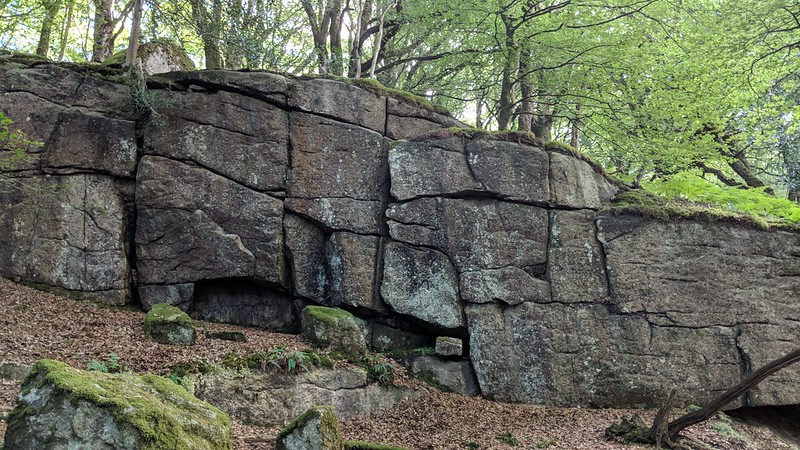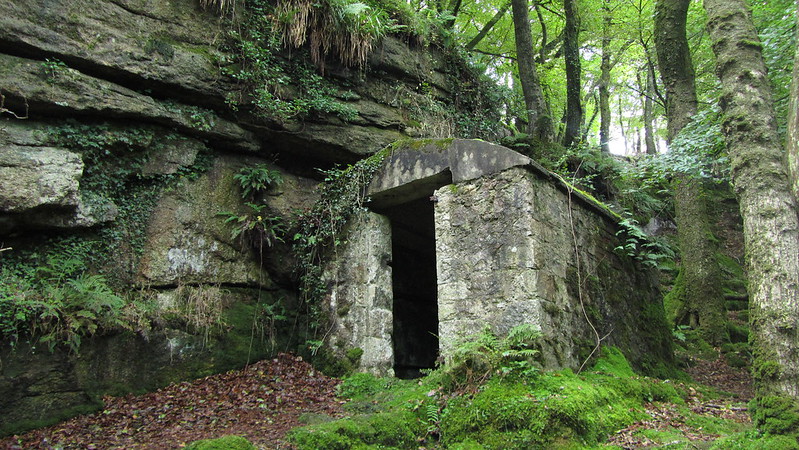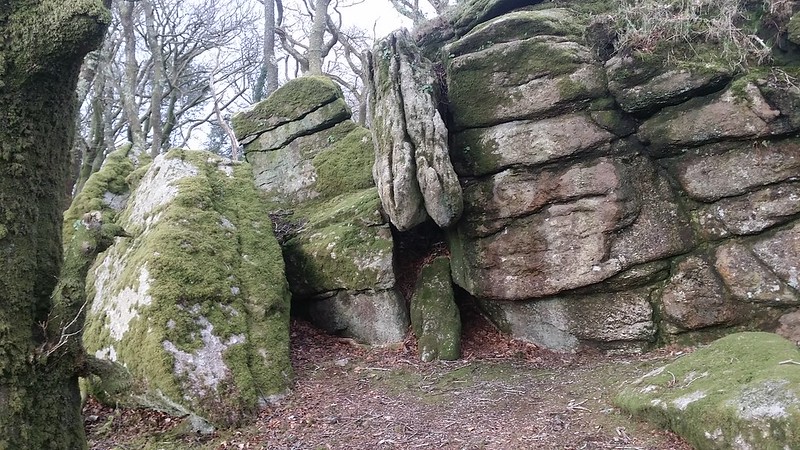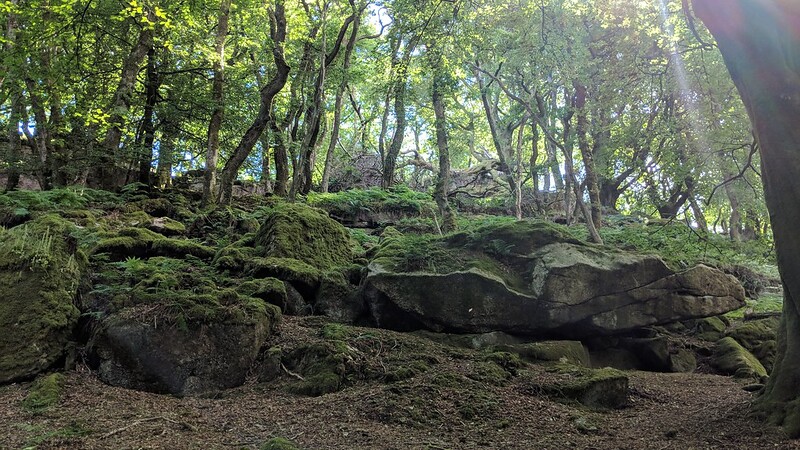TORS OF DARTMOOR
a database of both lesser- & well-known rocks and outcrops
Burra TorBurrator, Beara Tor, Berra Tor  Strangely although several features in the vicinity of the reservoir, for example the Lodge, House and Wood bear the name 'Burrator', the actual location of the tor itself has so far escaped the attention of the Ordnance Survey. Hemery (1983) states that the tor is also referred to as Beara or Berra and Worth (1953) explains that the name is probably derived from Biracombe, Bearacombe or Burracombe, meaning 'wooded valley' and hence the 'wooded tor'. Having stepped but a few yards beyond the stile at the eastern end of the dam at SX 553 679, the walker is confronted to the left by a series of huge dark and moss covered rocks, that climb skyward from the wooded floor like a giant granite fortress. Altogether eerie, yet at the same time fascinating, the sheer bulk of the tor dwarfs the onlooker, sprawling as it does southward across the shadowy expanse. From the summit there is little visible other than the range of magnificent boulders and twisting oak and beech trees that overhang the main body of the tor. All around the tor creates an air of slight unease and it is the domed rocks that most intimidate, especially on a dismal day, when mist seeps through the trees and slides menacingly over the silent granite hunchbacks.  The massive substance of the tor stretches back through the wood for a considerable distance and from below to the west forms a ridge of rock faces that oppose across the gorge the smaller yet striking crag of Claig Tor or Yennadon Crags. The most impressive face, the lowest, sits on the steepening western slope from which fleeting glimpses can be had of the River Mewy's early reach as it trickles from the reservoir lake. It is here that a huge, long wall of rock can be found reaching a height of approximately 25 feet in height as it extends from north to south. At its south eastern end, there is the well preserved remnant of a workman's hut.  Another feature of interest, resides at the southernmost tip of the higher portion of the tor, where an enormous overhanging slab, upon which fern and bramble grow, forms beneath it a cave roughly 10 feet deep, yet only a foot in width. At this site there lies a tor of immense proportions that is far from Hemery's disappointing description of 'small tor'. Its size occasions Bound (1991) to comment 'that were it not for the trees the tor would be most prominent'. Draped as it is in moss and fern, the rocks of Burra Tor have been condemned to perpetual twilight during day, as the dense protective wood shields it from the prying eyes of Dartmoor visitors. 
| ||||||||||||||||||||||||||||||